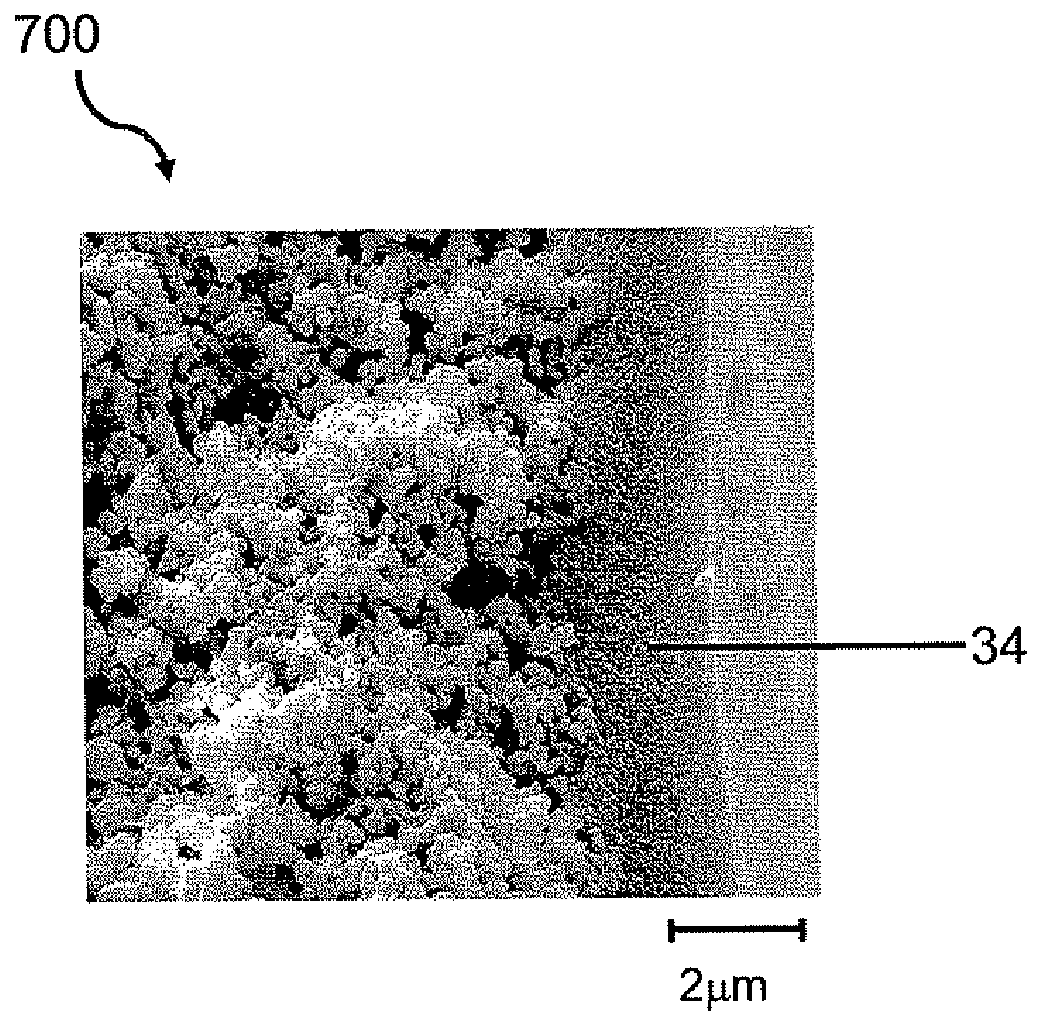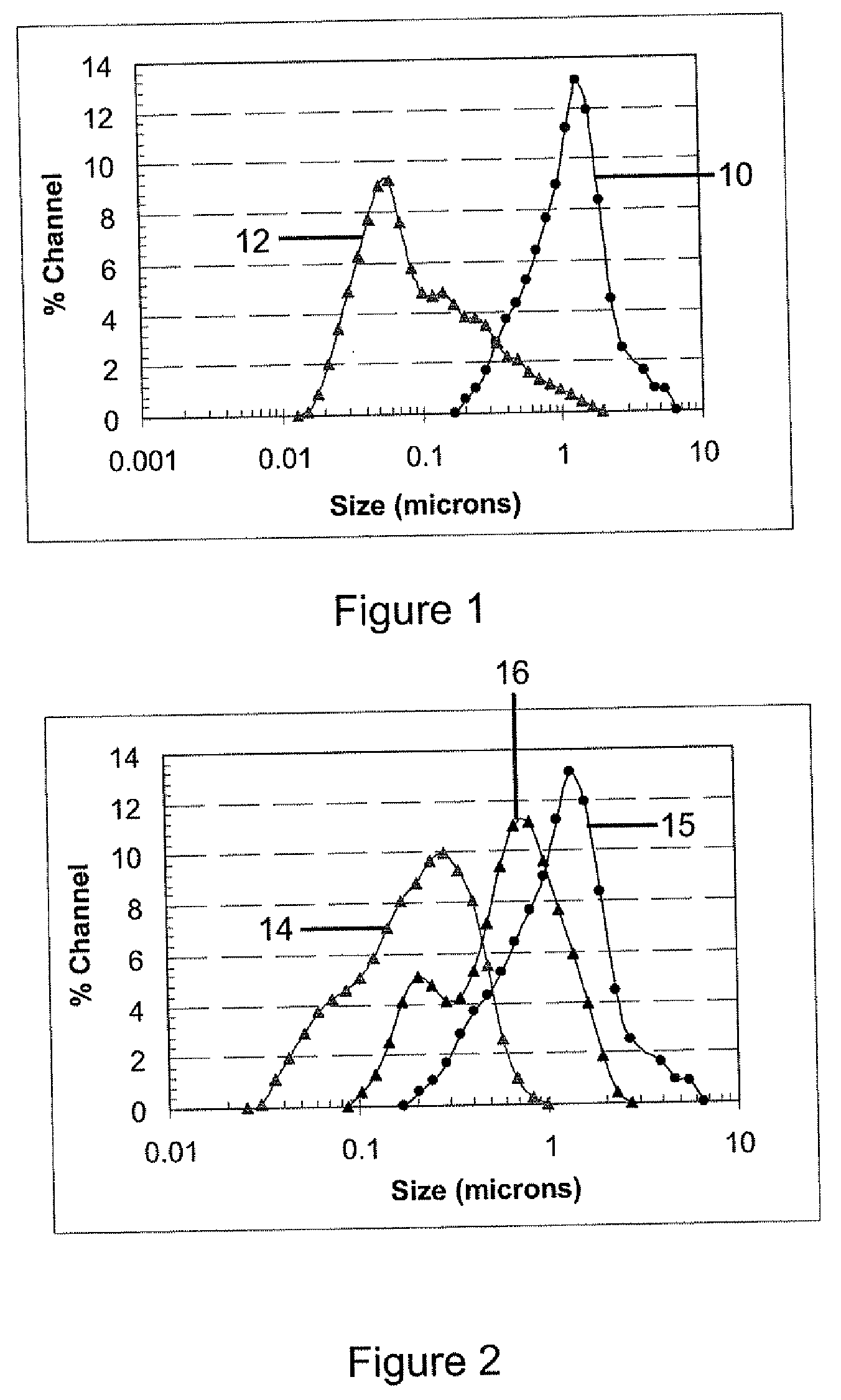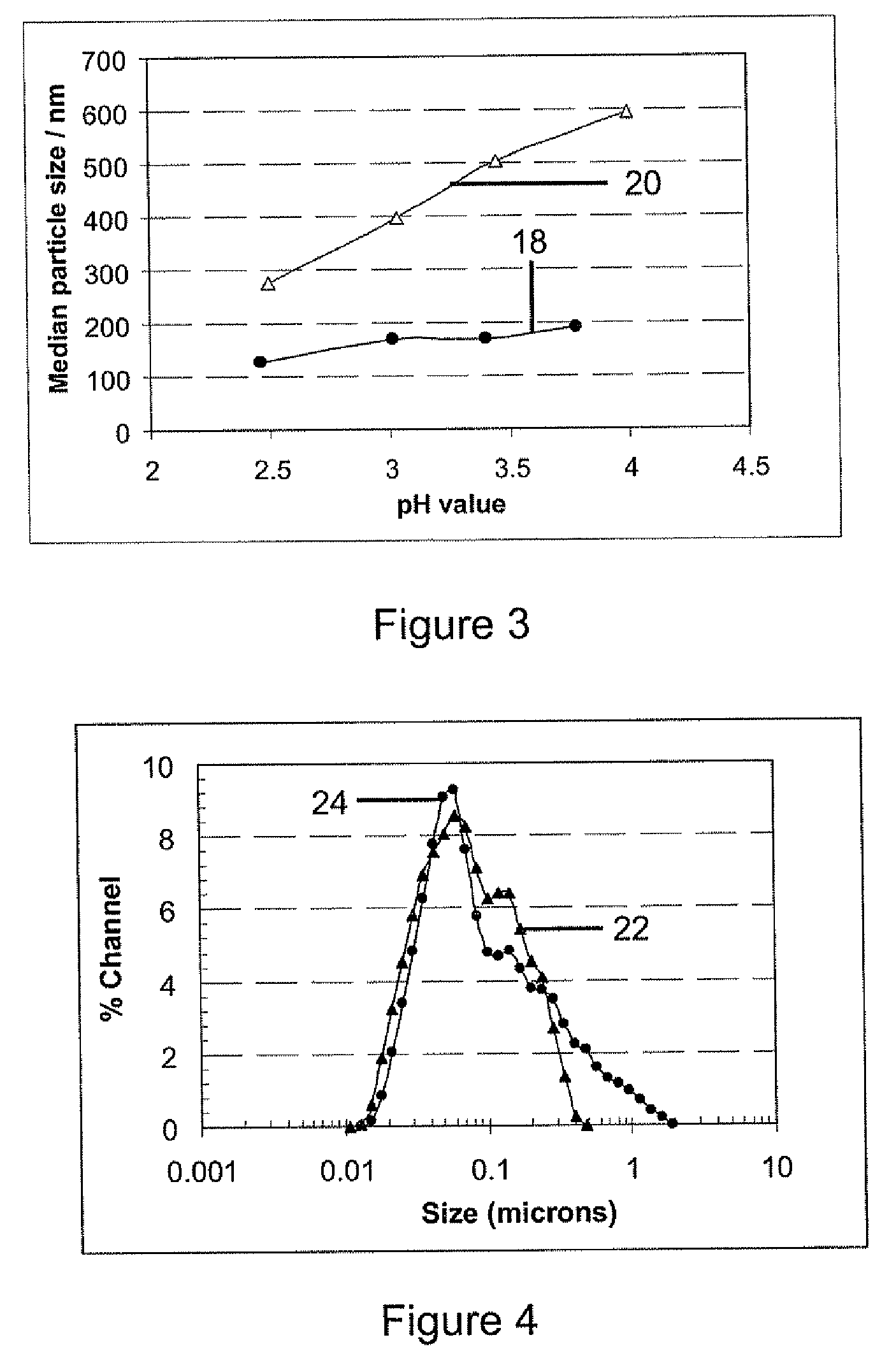Methods of Making Inorganic Membranes
- Summary
- Abstract
- Description
- Claims
- Application Information
AI Technical Summary
Benefits of technology
Problems solved by technology
Method used
Image
Examples
example 1
Preparation of the First Mixture
[0075]In this example, the first mixture was a colloidal boehmite sol comprising large boehmite particles prepared using aluminum isopropoxide and acetic acid as the alumina precursor and peptization agent respectively.
[0076]600 milliliters (ml) of deionized water was heated up to 80 Celsius (° C.) and a quantity of 81.76 grams (g) (0.40 mol) of aluminum isopropoxide (AIP) powder, available from Aldrich, was then added. Before the addition, the AIP powder was ground into fine particles using a porcelain mortar and pestle. This combination was then stirred by a magnetic stirring bar at a high speed and was maintained at a temperature of from 80° C. to 85° C. for 24 hours, allowing hydrolysis of the aluminum alkoxide, and forming a white precipitate. The precipitate was then heated to above 90° C. and the container was opened for evaporation of the as-produced alcohol. The alcohol could be collected by using a rotary evaporator. After 1 to 2 hours of ev...
example 2
Adjusting the Particle Size
[0079]This example describes a adjusting the particle size of the first mixture which is, in this example, adjusting the particle size of the original sol of large boehmite particles described in Example 1. Polyvinyl alcohol (PVA) was used as the polymer binder, in this example.
[0080]First, a PVA solution containing 4.0% by weight was prepared by dissolving PVA flats into deionized water. 190 ml of deionized water was heated up to a temperature of from 50° C. to 60° C., and then 8.0 grams of PVA was added to the water. The mixture was stirred using a magnetic stirring bar, followed by addition of 10 ml of 1M HNO3 solution. The PVA solution was ready once the PVA was completely dissolved in the water and a clear solution was obtained.
[0081]Second, a 600 ml mixture was made by mixing the first mixture comprising large boehmite particles from Example 1 with deionized water and PVA solution. 184 ml of deionized water was stirred and heated up to a temperature ...
example 3
Adjusting the Particle Size
[0084]In this example, polyethylene glycol (PEG) was used as the polymer binder. The same original boehmite sol first mixture was used as in Example 2.
[0085]First, a PEG solution containing 20.0% by weight was prepared by dissolving PEG solids into D.I. water. 40.0 grams of PEG was added to 200 ml of D.I. water. The mixture was stirred for from 4 to 6 hours until the PEG was completely dissolved in the water and a clear solution was obtained.
[0086]Second, a 600 ml mixture was made by mixing the original sol with D.I. water and the PEG solution. 263 ml of D.I. water was stirred and heated up to a temperature of from 50° C. to 60° C., and 61 ml of the 20% PEG solution and 276 ml of the original sol were added in.
[0087]The pH value of the mixture was adjusted to 4.0 with addition of 13 drops of 1M HNO3 solution. After mixing for from 2 to 4 hours, the mixture was obtained with a sol concentration of 0.4M and 0.4 wt % PEG. After cooling, the mixture was charac...
PUM
| Property | Measurement | Unit |
|---|---|---|
| Acidity | aaaaa | aaaaa |
| Acidity | aaaaa | aaaaa |
| Acidity | aaaaa | aaaaa |
Abstract
Description
Claims
Application Information
 Login to View More
Login to View More - R&D
- Intellectual Property
- Life Sciences
- Materials
- Tech Scout
- Unparalleled Data Quality
- Higher Quality Content
- 60% Fewer Hallucinations
Browse by: Latest US Patents, China's latest patents, Technical Efficacy Thesaurus, Application Domain, Technology Topic, Popular Technical Reports.
© 2025 PatSnap. All rights reserved.Legal|Privacy policy|Modern Slavery Act Transparency Statement|Sitemap|About US| Contact US: help@patsnap.com



